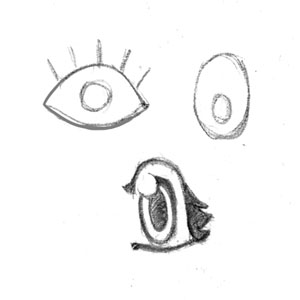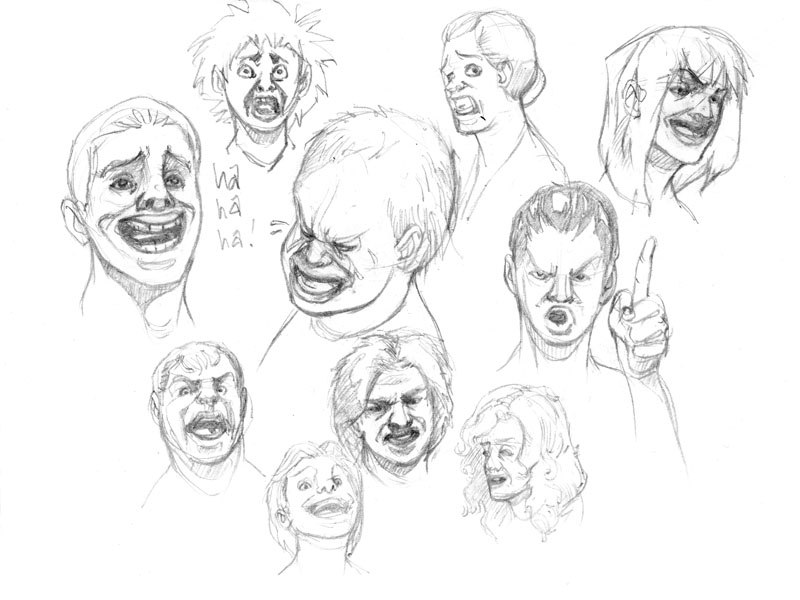I’m about to drop some zen thinking on you, so listen up. Ready?
What separates the mindset of a seasoned artist from an amateur?
The amateur has fewer questions.
BaBOOM! (drops the mic)
…OK so… maybe that bears explaining a bit further. Everyone starts off with more or less the same vacuum of knowledge when it comes to art and the rules that govern the visual world. Beginners tend to focus on the immediate questions (how do I draw Batman jumping off a roof? What does his costume look like?) whereas experienced artists see the task before them with greater nuance (what’s the most effective composition? Is Batman foreshortened correctly? Is the lighting accurate?). The experienced artist realizes the depth of complexity even the most basic image can present in a way the beginner does not.
Presumably you want to improve as an artist. In order to do so you need to expand your knowledge and skills. Unlike other subjects you’ve had to learn (I’m looking at you, high school algebra) where a teacher or coursework was in place to ask all the relevant questions for you, the majority of your education will be self-directed. It will be on you to ask the most difficult question of all: what don’t I know?
Observe Yourself
It should go without saying but you need to be drawing as often as possible. Whatever inspires you or catches your attention- USE that to fuel your sketching binges. If you do this regularly enough you can start to consider certain things, like:
- Do you habitually draw the same subjects in the same poses?
- Do you have tendencies to repeatedly avoid difficult subjects?
- Are there some things that you’ve never drawn?
If the answer to any of these questions is “yes” then you’ve discovered an opportunity for improvement. Whatever you’re avoiding is likely a weakness in your ability that you can now explore and correct. Maybe you find animals challenging to draw. Good! You can purposefully study animal anatomy and do live sketches at the zoo.
Recently, I realized I don’t draw enough varied facial expressions. My solution? Draw more laughing, shouting, crying heads. Crazy, I know!
As simple as it sounds (and is) the trick is self-awareness. If you can notice areas of weakness in your drawing ability then you will know exactly what issues you need work on.
Deprogramming
General awareness is only part of the equation. Teachers sometimes complain about the various “bad habits” people present that get in the way of true learning. Oftentimes, these habits are the result of the mind, in earlier stages, locking certain variables in place so that you can reach your next goal. A lot of wrong information remains that can impede your ability to notice problems with your drawings.
For example, the mind loves symbols. It will tell you “this is an eye”:

…when in reality these look nothing like real, human eyes. Yet at some point, it’s entirely possible that you were struggling to figure out how to draw a person and your mind substituted one of these symbols as “eye.” Problem solved! Except in the future all of the eyes you draw resemble that symbol. To an impartial observer, something could look off about your drawings but it’s entirely possible that your brain wouldn’t realize it!
There’s no easy fix for this problem. Basically, you have to be aware that the mind does this and try to set aside moments to examine your work with clarity. Scrutinize it… does anything look off? What, and why?
You may have noticed that the lowest symbol in the previous cluster is a “manga-style” eye. Some people deliberately incorporate a symbol-heavy style as a matter of preference, however I caution you against doing this. Using a symbol is the equivalent of copying a canned visual choice that was made in the past. If someone else originally made the choice, as with adopted styles, there’s no guarantee that you understand the logic behind it. Wait until you’ve learned the basics before experimenting with symbols in your own work.
Mix Up Your Schedule
Drawing the same things in the same way will get you nowhere. Use your observational ability to pinpoint weaknesses in your routine and respond by changing said routine. Most people don’t sketch environments, vehicles, or props. If you’re one of those people, maybe make Tuesday the day you draw boatloads of cars. When’s the last time you did a really intensive study of the human ear? Do that right now.
The exact structure of your schedule doesn’t matter. It may be beneficial to work out a list on paper (though, personally I like to keep things more freeform). You can focus on big subjects or hone in on small details. Be spontaneous.
Responding To Criticism
All of this scrutiny requires a thick skin. In a very real sense, growing as an artist means accepting your vulnerability to criticism. However, I want to underscore one last point:
Having flaws does not make you weak.
It’s true! Take any artist you admire- I guarantee there was a time they were bad at drawing. Only through constant course corrections and observation were they able to grind out their most glaring flaws and master the skills you appreciate. You can do the same.
So hone that keen eye and use it! Embrace your deficiencies and trust that by questioning yourself and your preconceptions you will find the way forward towards greatness.
makingcomics.com

Nether Kraken (me) is living proof that, “Drawing the same things in the same way will get you nowhere.”
It seems like you’ve really embraced that concept based off of the energy you’re throwing into those sketches! Nice blog.
Thanks Devin – and thanks to you and the rest of MC.com for getting a gust of fresh air blowing into my proverbial sails. I feel like the ship is inching forward again.
For whatever reason the header image in this article didn’t post with the description of who made it. It’s a cropped piece of a cover for X-men First Class Issue 3, and the artist is the talented Eric Nguyen. Just want to make sure everyone gets credit!
OMG I am not crazy, nor am I wasting my time. This articles tells me I’m doing something right. Thanks again.
What I personally do, when I find myself in a rut and realizing I am drawing much of the same thing over and over is change my medium before I decide exactly ‘what’ I’m going to draw. Making a physical change is much easier than a mental one, and so picking up pastels, or markers, or crayons etc. is far out of the range of normal utensils, but it lets me get out of my normal mental zone, it makes me ask ‘What am I capable of making with this’ instead of ‘what should I try drawing’- and often I give myself a nice little surprise.